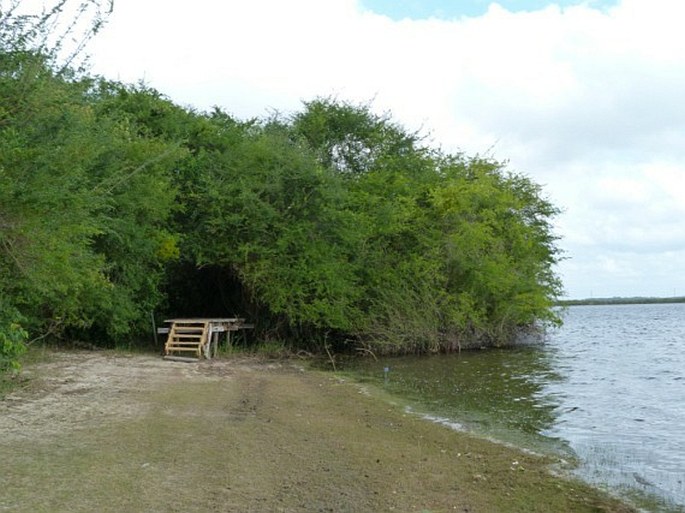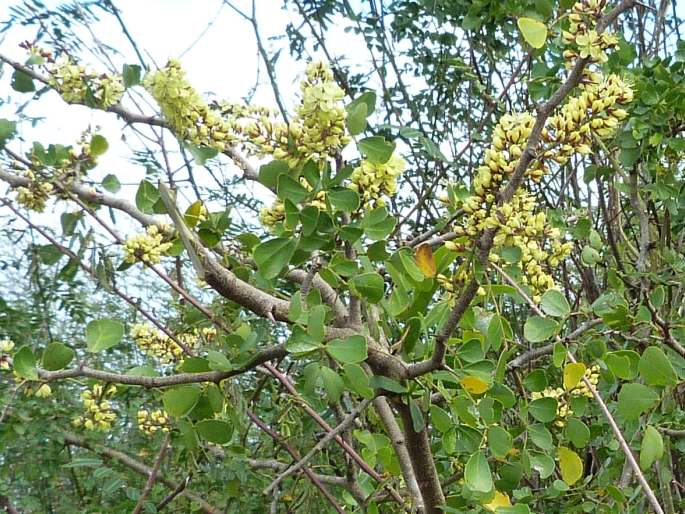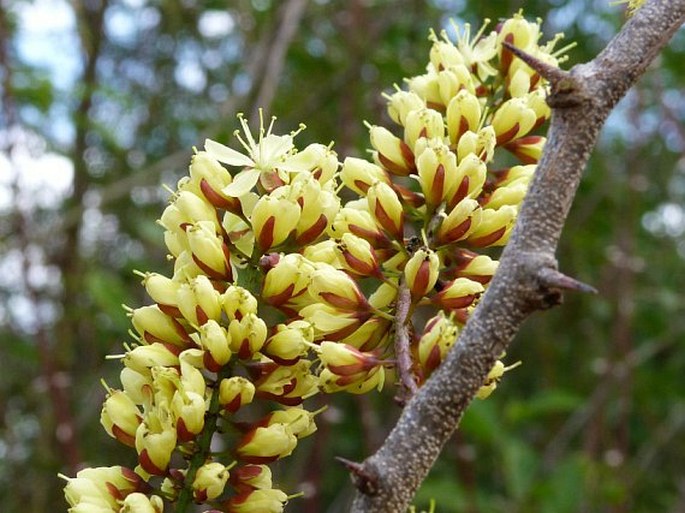Syn.: Cymbosepalum baronii Baker, Haematoxylon campechianum L., orth. var.
Family: Fabaceae Lindl.

Distribution: The Mesoamerican species – southern Mexico (Campeche, Chiapas, Quintana Roo, Yucatán), northern Belize and northern Guatemala. Naturalized elsewhere in tropics – during the 18th century it was introduced into the Caribbean, in Singapore and southeastern Asia in 1876, into Africa in 1890. For now, it is classified as an invasive woody plant.
Ecology: It grows in swamps, also in disturbed secondary forest, along roadsides, riverbanks, lowland dry forests, urban forests, and seasonally waterlogged areas.

Description: Small, thorny shrub or tree, 8–15 m tall. Trunk irregularly fluted and contorted, bark grey to brown, rather smooth, often with stout spines. Leaves alternate, petiolate; leaflets in 2–4 pairs, obovate, 10–35 mm × 5–25 mm, cuneate at the base, rounded or emarginate at the apex, glabrous. Flowers in 5–20 cm long racemes in the axils leaves, 5-merous, sweet-scented; pedicels equaling or shorter than the flowers; calyx 4–5 mm long, deeply lobed; petals 5–7 mm long, bright yellow; stamens 10, free; ovary superior. The fruit is a lanceolate pod, 3–5 cm long, pointed at both ends.
Use: The Logwood is cultivated as an ornamental plant and its wood is used to extract a series of dyes in darker tints of grey, brown, violet, blue and black. It is also used as timber in the fabrication of furniture and wood articles, the wood of this species is strong and durable. It is also used in traditional medicine.




These images were taken in Belize, Crooked Tree Wildlife Sanctuary (by Jindřiška Vančurová, February 22, 2015),


